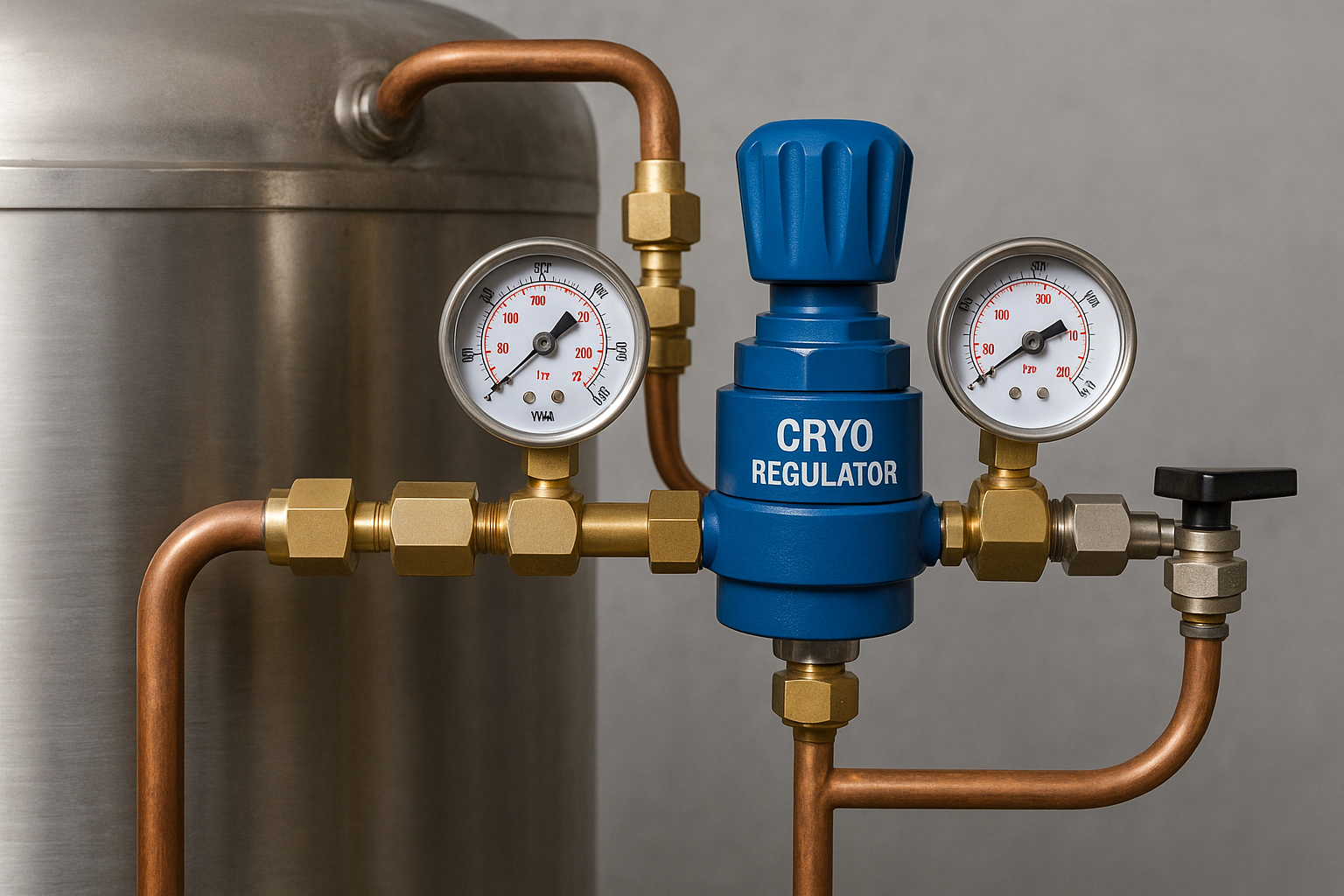The regulator you choose for a cryogenic installation has a huge impact on safety, reliability, and performance. Cryo regulators — built specifically to handle ultra-cold liquids and gases — are frequently the top pick for liquid nitrogen, liquid oxygen, LNG, and other cryogenic applications. Let’s break down why they’re trusted and when they’re the right choice for your system.
What is a Cryo Regulator?
A cryo regulator is a pressure control device purposely engineered for cryogenic fluids — gases or liquids stored at extremely low temperatures (often below −150°C / −238°F). These regulators control outlet pressure while resisting the unique hazards of cold service, such as freezing, thermal shock, and material embrittlement.
Typical applications include medical gas systems, vaporizers, LNG fueling points, laboratory setups, and industrial gas distribution networks.
Why Choose a Cryo Regulator?
Cryo regulators are selected for systems where safe and stable pressure delivery is critical. Their design and materials make them suitable for repeated cycles between ambient and cryogenic temperatures.
Key benefits
- Precise pressure control: Maintains steady outlet pressure despite fluctuations in inlet pressure or tank boil-off.
- Freeze-resistant design: Cold-rated seats and seals (e.g., PTFE, Kel-F) reduce the risk of ice formation and sticking.
- Material compatibility: Constructed from corrosion-resistant metals (stainless steel, brass alloys) and cleaned for oxygen service when required.
- Durability: Engineered for thermal cycles and high-pressure operation typical of cryogenic storage and transfer.
- Gas versatility: Available for nitrogen, oxygen, argon, CO₂, LNG, and other cryogens — with options certified for medical or industrial use.
Where Cryo Regulators Shine
Cryo regulators are the go-to choice in systems that start from liquid storage and end in regulated gas delivery. They integrate well with vaporizers, tank manifolds, and downstream instrumentation.
Common use cases
- Medical gas systems: Liquid oxygen and nitrogen supply for hospitals and clinics.
- Industrial manufacturing: Gas supply for welding, cutting, and inerting processes.
- LNG fueling: Dispensers and fueling stations requiring precise pressure control.
- Laboratory and research: Cryogenic cooling, sample preservation, and controlled gas feeds.
- Food & beverage: Controlled CO₂ or nitrogen usage in freezing and packaging lines.
Design Considerations & Selection Tips
Not all cryo regulators are identical — configuration depends on your system’s pressure, flow, and gas compatibility needs. Keep these selection points in mind:
- Pressure range: Match the regulator’s inlet/outlet ratings to your tank and downstream equipment.
- Flow capacity: Choose a regulator sized for peak and continuous flow (SCFH / Nm³/h).
- Materials & cleaning: For oxygen service, insist on oxygen-cleaned parts and oxygen-compatible materials.
- Seat & seal material: Low-temperature-rated polymers such as PTFE or Kel-F are common.
- Certifications: Look for vendor test reports, leak tests, and relevant safety certifications for your industry.
Other Applications & When Not to Use
While cryo regulators excel in cryogenic gas delivery, they are less common as a primary control element where bulk acoustic resonance or tone is the primary concern (this is more relevant to musical-instrument tonewoods than gas hardware — but the analogy holds: choose the tool matched to the function).
For highly specialized or exotic cryogenics (extreme flows, specialty gases with corrosive properties), consult manufacturers and consider custom materials or protective coatings.
Where to Buy Quality Cryo Regulators
Choose suppliers with a proven track record in cryogenic equipment, documented testing, and clear support for oxygen/medical service when needed. At GasNeeds, we source regulators from reputable global manufacturers and verify performance for industrial and medical applications.
Browse Cryo Regulators at GasNeeds
